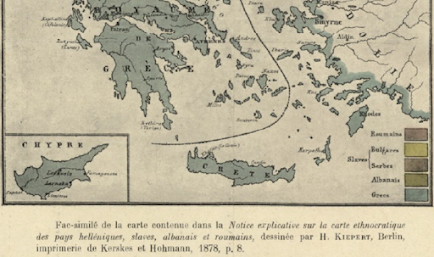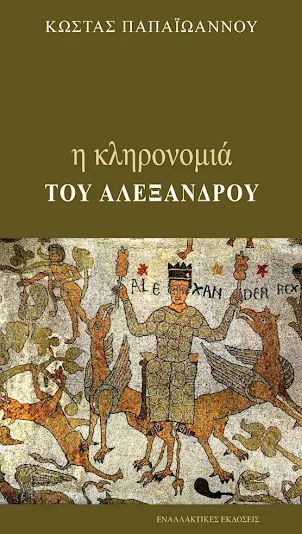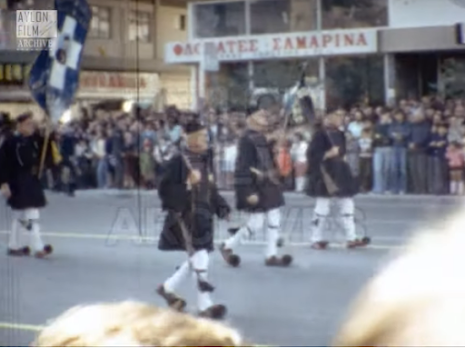Από τους σημαντικότερους και καλύτερα διατηρημένους
μακεδονικούς τάφους, που έχουν έλθει στο φως μέχρι σήμερα, είναι αυτός ''της
Κρίσεως'', ένα από τα ταφικά μνημεία της αρχαίας Μίεζας, που είχαν
κατασκευασθεί στην πορεία του αρχαίου δρόμου που ένωνε την πόλη με την
πρωτεύουσα του μακεδονικού βασιλείου, την Πέλλα. Οφείλει την ονομασία του στη
μοναδική για την αρχαία τέχνη ζωγραφική παράσταση που τον διακοσμεί και έχει ως
θέμα την κρίση του νεκρού. Χρονολογείται στο τελευταίο τέταρτο του 4ου αι π.Χ.
και ξεχωρίζει ανάμεσα στους μακεδονικούς τάφους για τις μνημειώδεις διαστάσεις
του και την επιβλητική του πρόσοψη.
Το μνημείο ανήκει στον τύπο του διθάλαμου μακεδονικού τάφου
με καμαρωτή στέγη και καλυπτόταν με χωμάτινο τύμβο που είχε ύψος 1,50 μ. και
διάμετρο 10 μ. Η πρόσοψή του είναι διώροφη, συνδυάζει το δωρικό με τον ιωνικό
ρυθμό και δίνει την εντύπωση αρχαίου διώροφου κτηρίου με αετωματική επίστεψη. Ο
''πρώτος όροφος'' είναι δωρικού ρυθμού με τέσσερις ημικίονες (τετράστυλο
πρόπυλο με παραστάδες στις άκρες), επάνω στους οποίους στηρίζεται το δωρικό
γείσο. Αποτελείται από τρίγλυφα και ένδεκα μετόπες, που διατηρούν τμηματικά την
πολυχρωμία τους και διακοσμούνται με ένα πολύ γνωστό θέμα, την αναμέτρηση των
Κενταύρων με τους Λαπίθες. Ταινία με σταγόνες και γραπτή ζώνη με άνθη και
έλικες διαχωρίζουν τις μετόπες από την ιωνική ζωφόρο που ακολουθεί. Το θέμα του
διακόσμου της είναι κάποια μάχη των Ελλήνων εναντίον των Περσών, ενώ είναι
χαρακτηριστικό ότι οι μορφές που τη συνθέτουν είναι ανάγλυφες (stucco). Πάνω από το γείσο
αναπτύσσεται ο ''δεύτερος όροφος'' της πρόσοψης. Αποτελείται από έξι μικρούς
ιωνικούς ημικίονες με ύψος 1,46 μ., ανάμεσα στους οποίους υπάρχουν διαστήματα
διαμορφωμένα ως ψευδόθυρες. Το αέτωμα πρέπει να διέθετε γραπτή διακόσμηση, όπως
προκύπτει από διάφορα θραύσματα που έχουν έλθει στο φως. Ανάμεσα στις ακραίες
παραστάδες και στους δωρικούς ημικίονες, που πλαισιώνουν τη θύρα, υπάρχουν
τέσσερις ζωγραφικοί πίνακες, οι οποίοι αποτελούν ενιαία σύνθεση που απεικονίζει
τη σκηνή της κρίσης του νεκρού. Ο νεκρός πολεμιστής οδηγείται από τον ψυχοπομπό
Ερμή στους κριτές του Κάτω Κόσμου, Αιακό και Ραδάμανθυ, θέμα εξαιρετικά σπάνιο
στην εικονογραφία, αλλά γνωστό από τον πλατωνικό διάλογο ''Γοργίας''. Από τον
τρόπο απόδοσης των μορφών προκύπτει ότι δύο ζωγράφοι συμμετείχαν στη διακόσμηση
του τάφου. Ο προθάλαμος, αν και δεν έχει ανασκαφεί πλήρως, φαίνεται ότι δεν
διέθετε γραπτές παραστάσεις. Αντίθετα, ο νεκρικός θάλαμος με την αρχιτεκτονική
διάρθρωση των τοίχων θυμίζει έντονα τις εσωτερικές όψεις σπιτιών της Πέλλας και
της Δήλου. Διαθέτει τοιχοβάτη, κυρίως τοίχο, παραστάδες στις γωνίες, θριγκό και
καμαρωτή στέγη. Βαθύ γαλάζιο, κόκκινο και λευκό είναι τα χρώματα που έχουν
χρησιμοποιηθεί στο θάλαμο, ενώ ιωνικά κυμάτια, ρόδακες και ταινίες διακοσμούν
τα διάφορα αρχιτεκτονικά μέλη.
Ο τάφος της Κρίσεως εντοπίσθηκε τυχαία το 1954 κατά τις
εργασίες διάνοιξης επαρχιακού δρόμου και ανασκάφηκε από τον καθηγητή Φώτιο
Πέτσα κατά τα έτη 1954-1964. Είχε υποστεί σοβαρές φθορές ήδη από την
αρχαιότητα, τόσο στην καμάρα του προθαλάμου όσο και στην πρόσοψη. Εργασίες
συντήρησης των κονιαμάτων και δομικής αποκατάστασης της πρόσοψης έγιναν το
1998, παράλληλα με ανασκαφή από τη Λ. Στεφανή, ενώ σήμερα βρίσκεται σε εξέλιξη
το έργο ανάδειξης του μνημείου, που προβλέπει και νέα πρόσβαση για άτομα με
ειδικές ανάγκες.
Συντάκτης
Ε. Ψαρρά,
αρχαιολόγος
One of the
most important and best-preserved Macedonian tombs discovered so far is the
so-called Tomb of Judgement. Its name derives from the painted representation
of the judgement of the dead, unique in antiquity. The tomb lies with other
similar funerary monuments along the road connecting the town of Mieza with
Pela, the capital of the Macedonian Kingdom. Dated to the last quarter of the
fourth century BC, it has a particularly imposing facade and is the largest
known Macedonian tomb.
The
monument is a typical double-chambered Macedonian tomb with barrel-vaulted
ceilings, buried under a tumulus 1.50 metres high and 10 metres in diameter.
The two-storeyed fa?ade, which combines both Doric and Ionic styles, is crowned
by a pediment and gives the impression of a two-storeyed building. The 'ground
floor' is Doric with four engaged columns in antis supporting a Doric
entablature of triglyphs and metopes. The eleven metopes preserve part of their
polychrome decoration with representations of the battle of the Centaurs and
Lapiths, a popular theme. A band of pegs and another with painted flowers and
volutes separate the metopes from the Ionic frieze above. This bas-relief
frieze with stucco figures depicts a battle between Greeks and Persians. The
'second storey' has six Ionic engaged columns, 1.46 metres high, alternating
with false doors, and was surmounted by a pediment. The pediment, of which only
fragments survive, had painted decoration. On the 'ground floor', between the
antae and the engaged columns are four painted panels representing the
judgement of the deceased. The dead soldier is lead by Hermes Psychopompos
('guide of the souls') before the judges of the Underworld, Aiakos and
Rhadamanthys. This theme, known from Plato's Gorgias, is extremely rare in
iconography. Differences in the rendering of the figures indicate that two
painters worked on the composition. The ante-chamber, though not fully
excavated, does not appear to have had painted decoration. The interior of the
burial chamber, however, with its ornate architectural features recalls the
houses at Pella and Delos. It has a toichobate, a wall proper, antae at each
corner, an entablature and a vaulted ceiling. The walls are painted deep blue,
red and white, and the architectural members are decorated with painted Ionic
kymatia, rosettes and bands.
The Tomb of
Judgement was discovered during road construction in 1954 and was excavated by
Professor Photios Petsas in 1954-1964. Both the ante-chamber and the facade
were severely damaged in antiquity. The monument was re-excavated in recent
years by L. Stephani and restored in 1998. An access ramp for visitors with
ambulatory difficulties is currently under construction.
Author
I. Psarra,
archaeologist











































.jpg)











